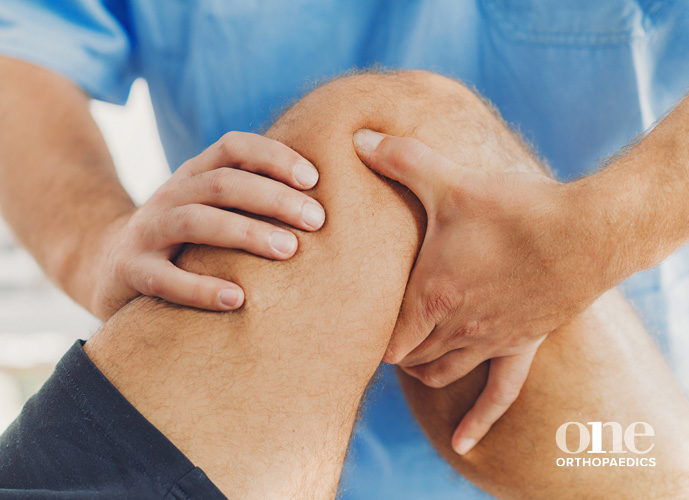Running is a brilliant form of exercise. However, since it is a relatively high-impact sport, injuries are common. Both novice runners and experienced athletes can develop knee conditions and injuries from time to time. Read on to learn more about knee injuries caused by running, why they occur, and what you can do to treat and prevent them.
Why do my knees hurt after running?
Various injuries and conditions can contribute to knee pain after your run. Achy knees are often part and parcel of regular running and can be caused by various factors, such as:
- Inflammation
- Muscle fatigue
- Tendon or ligament strains
- Cartilage damage
What is runner’s knee?
Runner’s knee (patellofemoral pain) is a common condition that can affect both novice and experienced runners. It causes a dull pain around the front of the knee and is often worse after running rather than during it. This usually occurs when a person is active but may also be triggered by long periods of sitting down with their knees bent. This pain can also contribute to a sensation of weakness in the knees or instability when standing, walking, and running.
Other symptoms include rubbing, grinding, or clicking sensations in the kneecap when the leg is straightened. Some patients also describe a tender feeling when they touch the affected knee. Pain below the kneecap or to the outside of the knee is also common.
Runner’s knee diagnosis
Diagnosing the condition is not always straightforward as there are multiple potential causes and a medical professional will also need to rule out some other issues that could be causing the pain in your knee. These include some of the problems discussed above and other issues like a tear to the meniscus, patellofemoral overload, alignment issues, bursitis, and ITB friction.
If your orthopaedic specialist decides that your symptoms are consistent with the runner’s knee, they will then attempt to determine the underlying cause. This can be challenging and often requires reviewing your medical records, sports history, an x-ray, or further imaging.
Your specialist will be able to determine the most likely cause of your injury using this information. This will help them to prescribe treatments and make suggestions to help you avoid developing a runner’s knee in the future.
Runner’s knee treatment
As mentioned above, the best treatment for the condition depends on various factors like your medical and sports history. Other things that can impact the treatment of the condition include your age, the severity of the pain, your overall health, how you handle specific medicines, how long you have had the problem, and your own preferences.
Common treatment plans will include cold packs, elevation of the leg, and compression of the knee joint. Additionally, medicines like ibuprofen can help to reduce swelling and pain. Stretching can be helpful to reduce the symptoms, and strengthening the surrounding muscles may also help prevent further problems. Your doctor may recommend some orthopaedic insoles to correct your arches or pronation, which could improve the alignment of your knee.
Your doctor may also recommend some steps you can take to prevent the issue from recurring. You might need to lose weight, improve your stretching before exercising, wear appropriate running shoes, and practice proper form while running. In severe cases, a variety of injections are available to aid recovery.
Can you still run with runner’s knee?
As a general rule, if you have been diagnosed with a runner’s knee or suspect that you might have the condition, you should avoid running when possible. This can exacerbate the issues you are feeling in your knee and increase the time it takes to recover from the injury. Running puts a lot of strain on your joints, especially if you are overweight, so you could easily exacerbate issues by running through the injury.
However, this isn’t to say you should stop being active altogether. Instead, it would help if you focused on more low-impact options like cross-training. Low-impact cardio will promote healing by stimulating blood flow to the injured area and help you maintain your fitness levels for when you are ready to get back into running. Additionally, some lightweight work could help you strengthen the muscles surrounding your knee, to reduce the likelihood of relapsing.
On the whole, a runner’s knee can be painful, and, as a result, you might be reluctant to exercise for fear of exacerbating the problem. The condition can worsen if you continue to run while the injury heals, but you should keep active to promote recovery and see an orthopaedic consultant as soon as possible.
How we can help you
At One Orthopaedics, our highly experienced team of surgeons and allied health professionals provide clinical excellence that ensures every patient makes the best possible recovery.
So, if you are suffering from knee pain or runner’s knee, please book an appointment with one of our experienced orthopaedic specialists who will be able to diagnose your condition and provide you with the best course of action.





